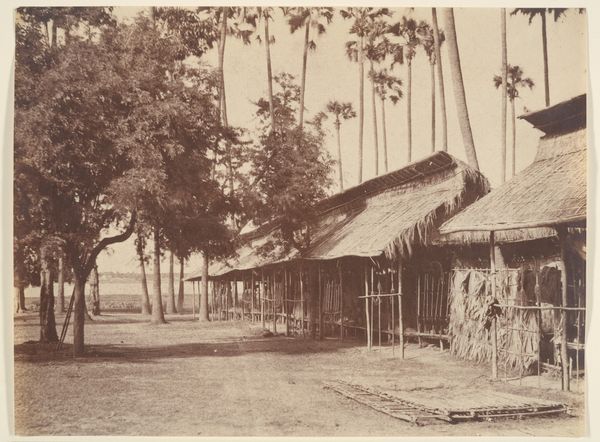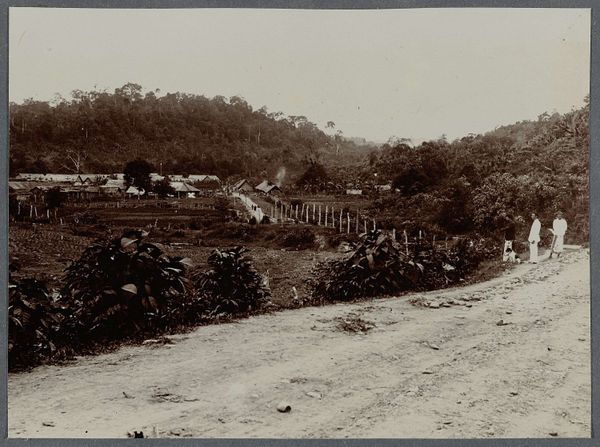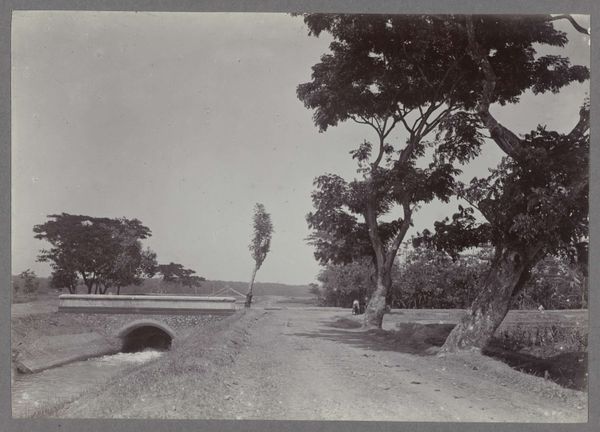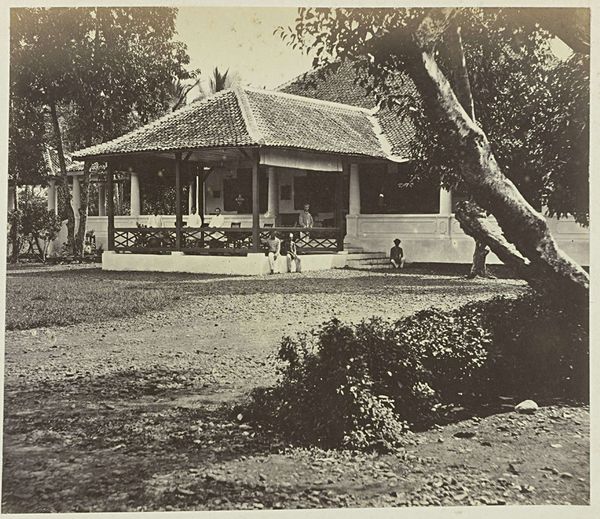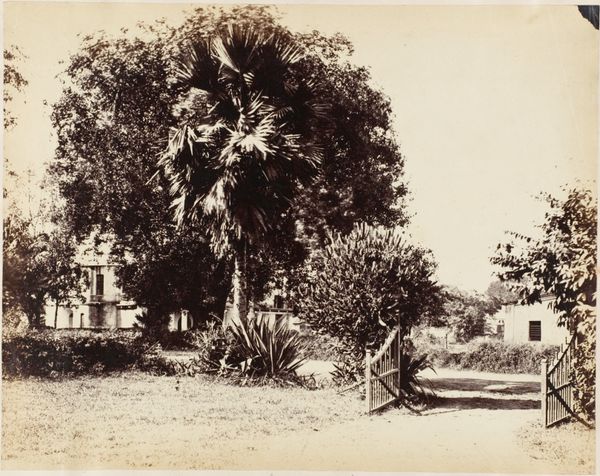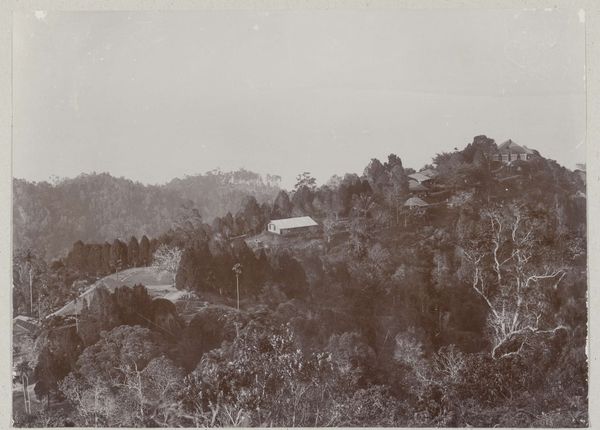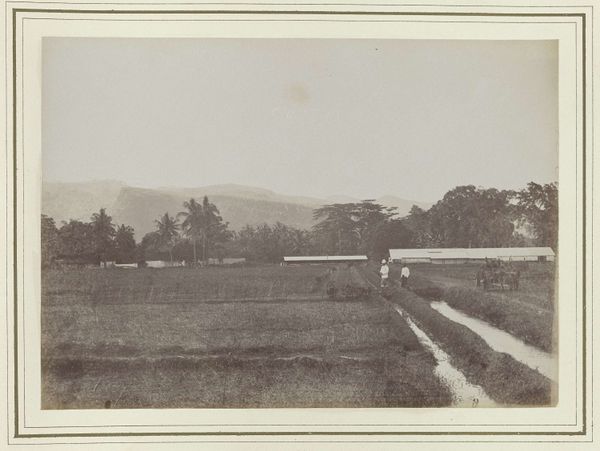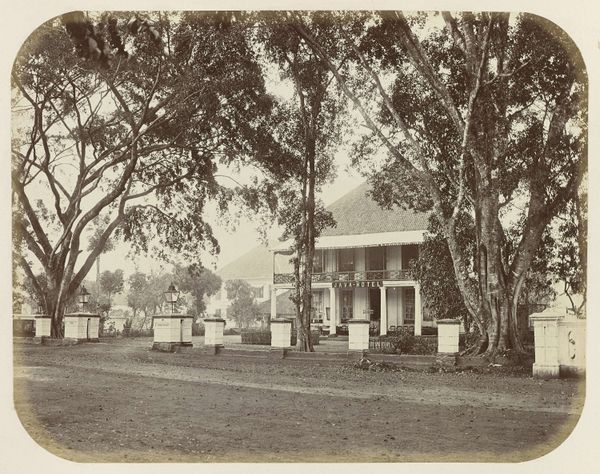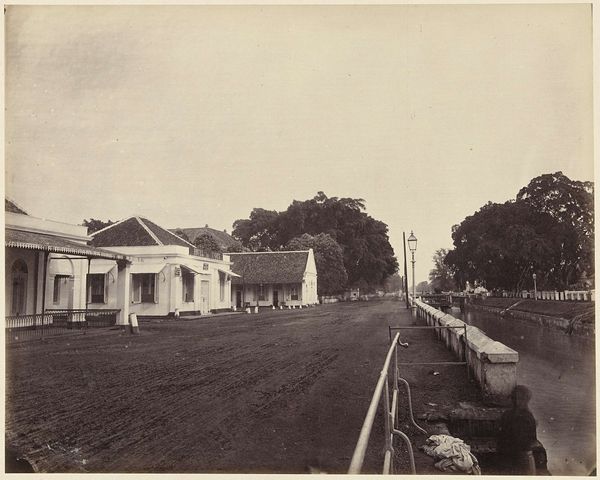
photography, gelatin-silver-print
#
natural tone
#
countryside
#
landscape
#
photography
#
low atmospheric-weather contrast
#
old-timey
#
orientalism
#
gelatin-silver-print
#
19th century
Dimensions: height 240 mm, width 300 mm
Copyright: Rijks Museum: Open Domain
Curator: Isidore Kinsbergen's gelatin silver print, possibly created between 1873 and 1879, is entitled "Laan naar de Borobudur". Editor: It feels strangely calm. There's something almost geometrically composed about the image that gives it a powerful, contemplative presence, despite the muted palette. Curator: I agree. Notice the stark tonal contrast – a very common feature of 19th-century photography. That starkness really lends itself to this sensation. Kinsbergen's imagery invites a journey, both literal and perhaps spiritual. The symmetry almost hints at ritualized progression. Editor: The repeating motif of the trees has symbolic value beyond just the plants. These framing elements seem intended to orchestrate our gaze, leading us towards what? Some kind of resolution represented in the dwelling or further vista? Also what do you think it reflects of Dutch orientalism? Curator: That's interesting that you're reading them as such symbolic motifs. Given the history of Dutch colonial involvement in Indonesia, it speaks, perhaps unconsciously, to power and control. The photograph frames and domesticates the landscape, transforming it into a subject for European consumption. The architecture serves as a type of cultural shorthand of "the Orient," ripe with colonial associations. It's about making this land knowable and therefore controllable. The image subtly reinforces colonial power dynamics by presenting the viewer as an outside observer looking in, possessing a privileged gaze. Editor: Your observations about how the dwelling symbolizes power are enlightening. Considering these photographs through the lens of colonialism allows us to interrogate the psychological effect of exoticism on both the colonizer and colonized. Curator: Absolutely. And while the calm captured is visually beautiful, acknowledging the layers of meaning encoded within such an image asks us to look closely at the power and the history behind beauty. Editor: Kinsbergen's work, then, becomes a prompt to consider not just what we see, but the historical conditions that enable that very act of seeing. Curator: A pertinent reminder indeed.
Comments
No comments
Be the first to comment and join the conversation on the ultimate creative platform.


